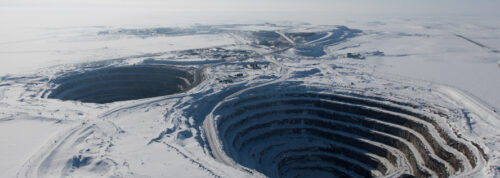The certification provides a precise assessment of your diamond's performance across the 4 C's, which in turn dictates its quality and value, making it imperative to invest in diamonds that excel in each of these categories to maximize resale potential. Before proceeding, it's essential to understand what each of these C's represents.

What do the 4 C’s mean?
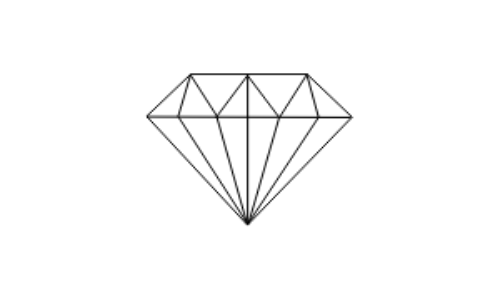
CARAT
The weight and size of a stone is expressed in carat.

COLOUR
The colour gradation of a colourless diamond ranges from D (colourless) to Z (yellowish).

CLARITY
Most natural diamonds have internal impurities, called inclusions. Flawless is the highest clarity grade which contains no single impurity.

CUT
The cut refers to the proportions, symmetry and shine of a diamond.
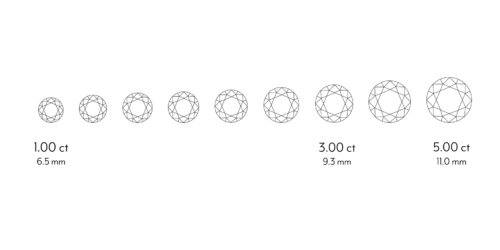
Carat
The carat weight of a loose diamond denotes the gemstone's mass, with one carat equivalent to approximately 200 milligrams. The mass of a gemstone is always expressed with two decimal places after the point, or in points on a scale of 100 points. For example, 0.75 carat is equal to 75 points ct. or 150 milligrams.
The price of a diamond increases exponentially as the carat weight increases. For example, a diamond of 2.00 carats costs thrice rather than twice as much as a diamond of 1.00 carat with the same specifications.
You should also not underestimate the symbolic value of the carat weight. For example, a diamond of 1.01 carat costs much more than one of 0.90 ct., because you exceed the magic size of 1.00 ct here. Other such magic sizes include 1.50 ct or 2 ct. Once we reach that magic size, the price increases exponentially.
At BNT Diamonds, we exclusively offer natural diamonds of 1 carat or larger, as these are most recognized for their investment value.
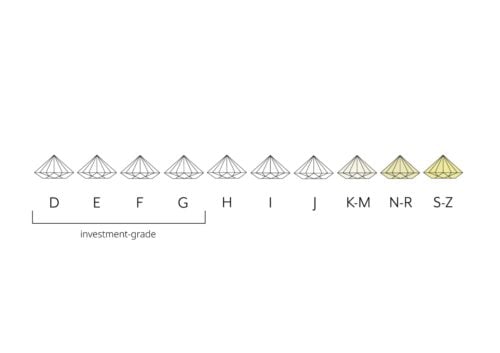
Colour
Colourless diamonds are graded from completely colourless to a more yellowish shade. The grades themselves are expressed using lettres, with D as completely colourless and Z as tinted yellow. The highest graded and rarest colourless diamonds are labelled with D.
At BNT Diamonds, we exclusively offer natural diamonds of D, E, F or G colour, as these are most recognized for their investment value.
In addition, there are coloured diamonds with colours as orange, pink, red, yellow, green or blue. Depending on the colour, they are very rare, and therefore also very expensive. Really intense coloured diamonds are called fancy coloured diamonds. The most commonly found fancy colour is yellow, while pink, green, blue and red are rare to extremely rare.
The diamonds with the most vivid shades are very valuable, so coloured diamonds can serve perfectly as an investment. The market is more niche for the very rare diamonds (very large, coloured, and with a fancy cut). Do not confuse coloured diamonds with other naturally coloured gems, such as emeralds, rubies or sapphires.
At BNT Diamonds, we exclusively offer natural diamonds starting an intensity of “fancy”, as these are most recognized for their investment value.
At BNT Diamonds, we exclusively offer natural diamonds of D, E, F or G colour, as these are most recognized for their investment value.
In addition, there are coloured diamonds with colours as orange, pink, red, yellow, green or blue. Depending on the colour, they are very rare, and therefore also very expensive. Really intense coloured diamonds are called fancy coloured diamonds. The most commonly found fancy colour is yellow, while pink, green, blue and red are rare to extremely rare.
The diamonds with the most vivid shades are very valuable, so coloured diamonds can serve perfectly as an investment. The market is more niche for the very rare diamonds (very large, coloured, and with a fancy cut). Do not confuse coloured diamonds with other naturally coloured gems, such as emeralds, rubies or sapphires.
At BNT Diamonds, we exclusively offer natural diamonds starting an intensity of “fancy”, as these are most recognized for their investment value.
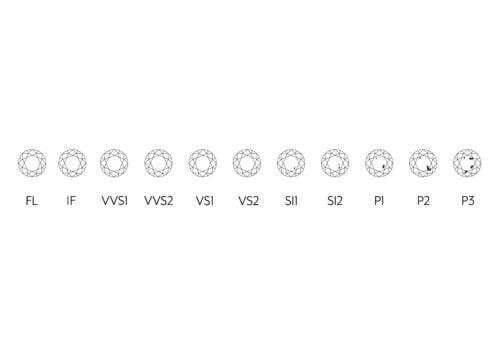
Clarity
The majority of all diamonds show impurities. It may concern external or internal impurities, which arose during the diamond’s genesis process. These internal impurities are called inclusions.
It is important to know that not all inclusions are visible with the naked eye. After experts have studied the diamond on impurities using a microscope with a tenfold magnification, it is graded. If there are no impurities, the diamonds are pure or loupe clean and therefore of the highest quality.
Inclusions can obstruct the sparkle of a diamond. They block the reflection of light if they are in the path of the light, but of course, impurities should not impeach the beauty of the diamond. To guarantee that, we only select diamonds with inclusions that are not visible to the naked eye.
Two types of inclusions:
The clarity of the diamond can be flawed in two ways, affecting the diamond’s quality:
External impurities occur during the cutting process or are the result of daily use.
Internal impurities involve inclusions inside the gemstone. There are different types.
Most common inclusions:
The most common internal inclusions consist of three subtypes. Black or dark spots inside the diamond are generally forms of coal that is not transformed into a diamond. Then there are clouds, which are microscopic veils. Lastly, there are ‘feathers’. These are the most prevalent inclusions and are the result of molecular fractions that arose during the thousands of years-long formation process of diamonds.
At BNT Diamonds, we exclusively offer natural diamonds with a clarity of VS1 or higher, as these are most recognized for their investment value.
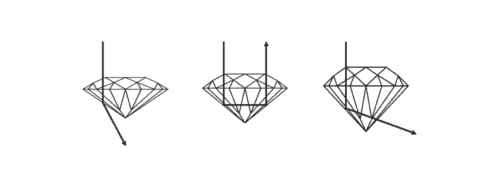
Cut quality
Perhaps the most important property of a diamond is the quality of the cut. The level of the cut of a diamond determines how bright it shines and twinkels. It is also the only human factor. The cut quality is determined by the proportions, symmetry and the extent to which the diamond shimmers. A well-cut diamond reflects almost all the light back through the crown (where it also enteres) back outside. This gives a diamond its characteristic radiance.
At BNT Diamonds, we exclusively offer natural diamonds with cut, polish & symmetry of Very Good as a minimum, as these are most recognized for their investment value.
When is a diamond well cut?
The cut quality is also the only human factor. The cut quality is determined by the proportions, symmetry and the extent to which the diamond shimmers. The pavilion of a diamond (the lower part) should not be cut too deep or too shallow. If the diamond was not cut properly, light escapes or dark surfaces in the gemstone can be seen. In a perfectly cut diamond, almost all the light will be reflected through the crown (the upper part).
Cut shape
In addition to cut quality, the word ‘cut’ can also refer to the shape of a diamond. While the shape is not a part of the 4 C’s, we recommend paying attention to it when selecting investment diamonds.
The brilliant cut (round) is by far the most requested cut especially for white diamonds. Its 58 facets ensure the light entering is maximally reflected. This is how brilliant cut diamonds achieve their distinctive brilliance, much sought- after in diamond jewellery.
Or you can invest in fancy cuts, which is especially interesting when it comes to coloured diamonds or high carat weights. The most famous are the pear, oval, heart, cushion shape or emerald.
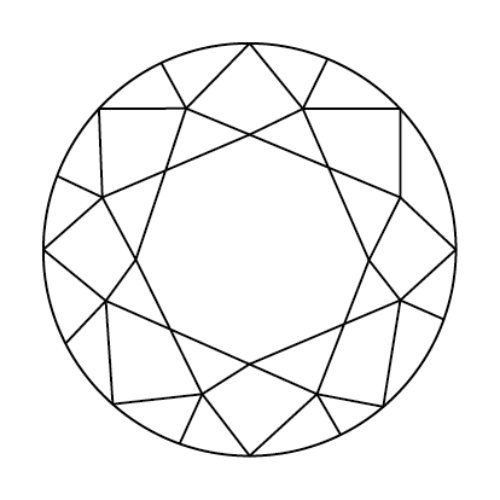
Round cut
At BNT Diamonds, we recommend you opt for round diamonds when investing in white diamonds as these are the most requested ones and therefor best suited for your investment.
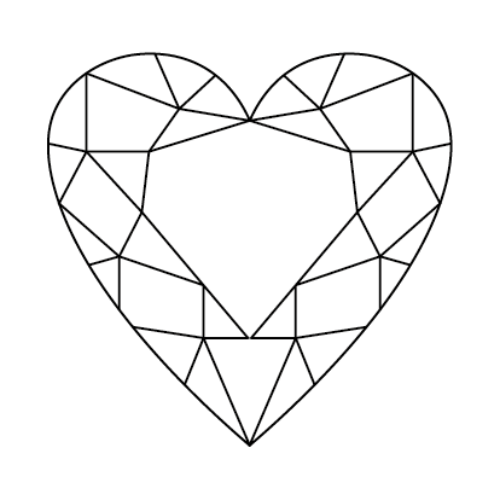
Fancy cut
At BNT Diamonds, we recommend you opt for fancy cuts when investing in coloured diamonds as these are the most requested ones and therefor best suited for your investment.

All investments carry risk and all investment decisions of an individual remain the responsibility of that individual.
Our diamonds
With the widest selection of certified diamonds in the world, we offer the 10 classic diamond shapes, from 1.00 ct. and up. All our high-quality diamonds were purchased ethically responsibly and certified by a renowned international diamond certification organisation, such as GIA, IGI and HRD.
See our selection of loose diamonds
Would you like to learn more about your investment options and diamond quality or there is a specific diamond you cannot find on our website? Ask for advice from the diamond experts at BNT Diamonds via mail or chat, or talk to our team directly by calling +32 3 201 24 90.
